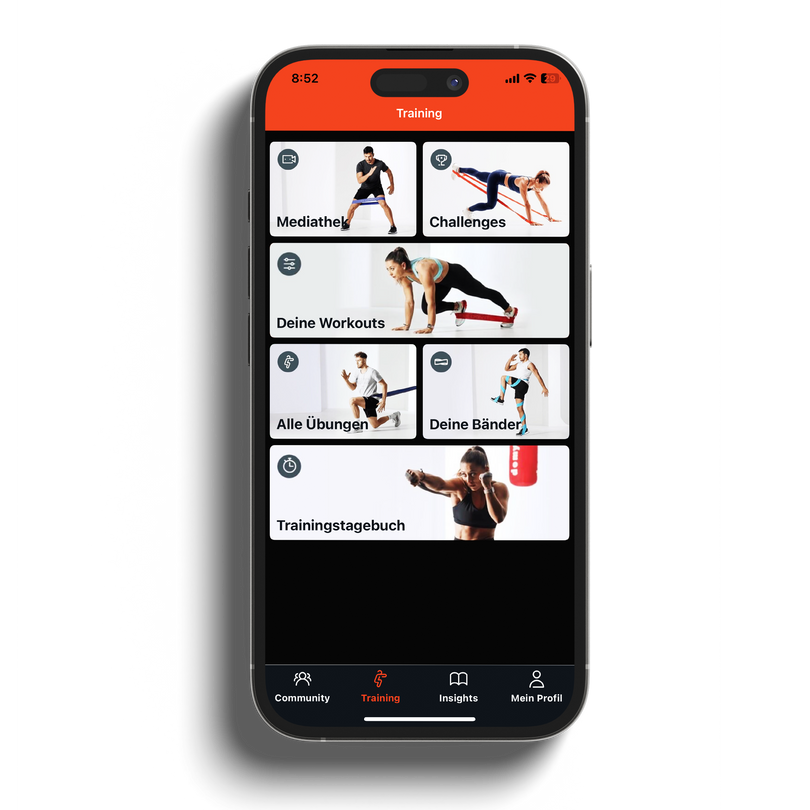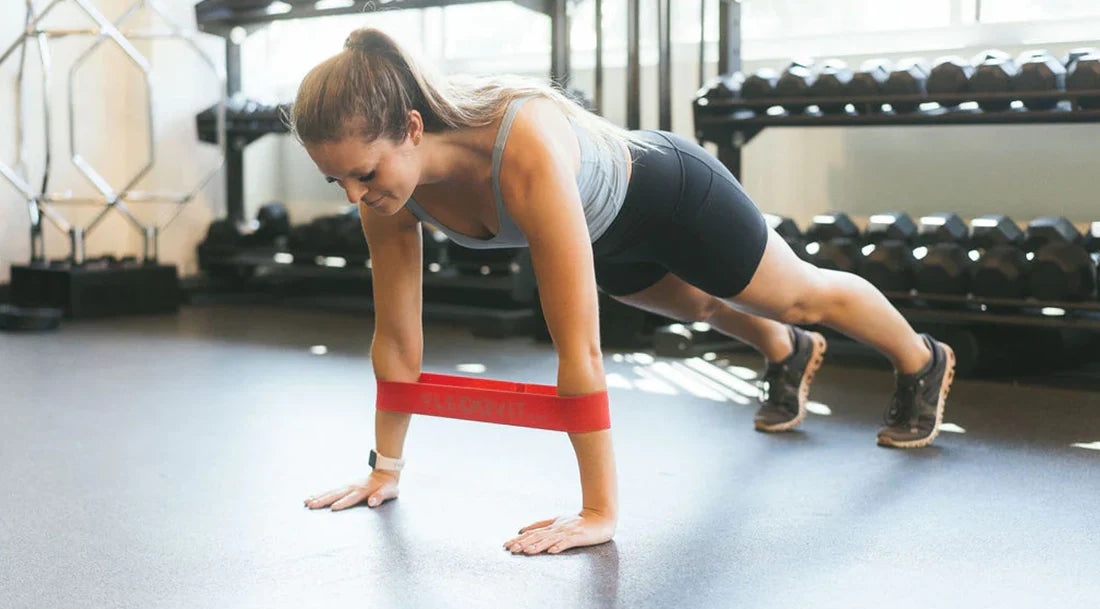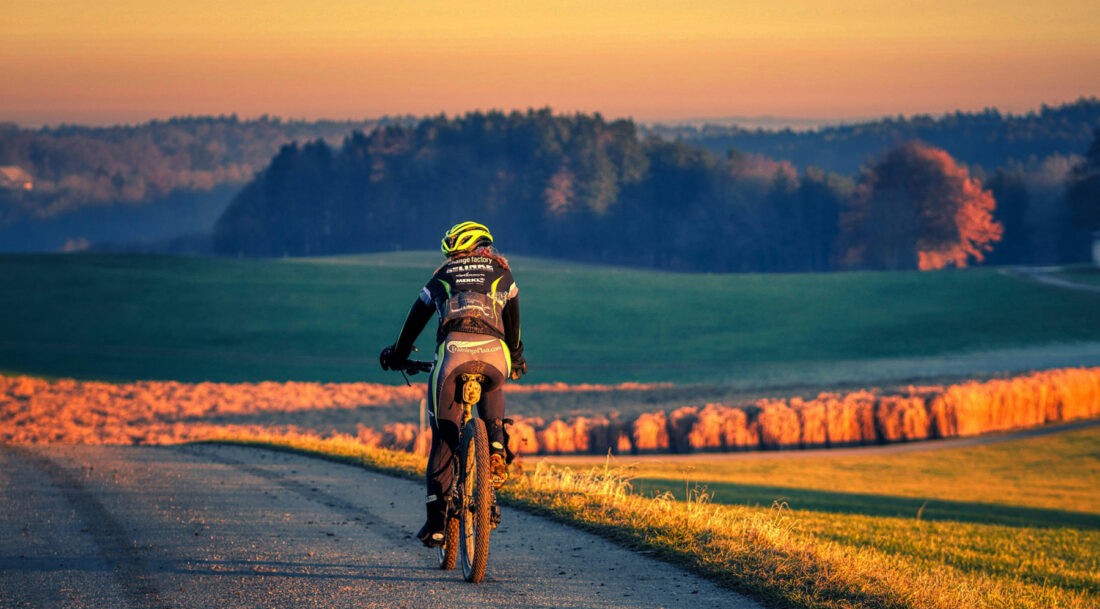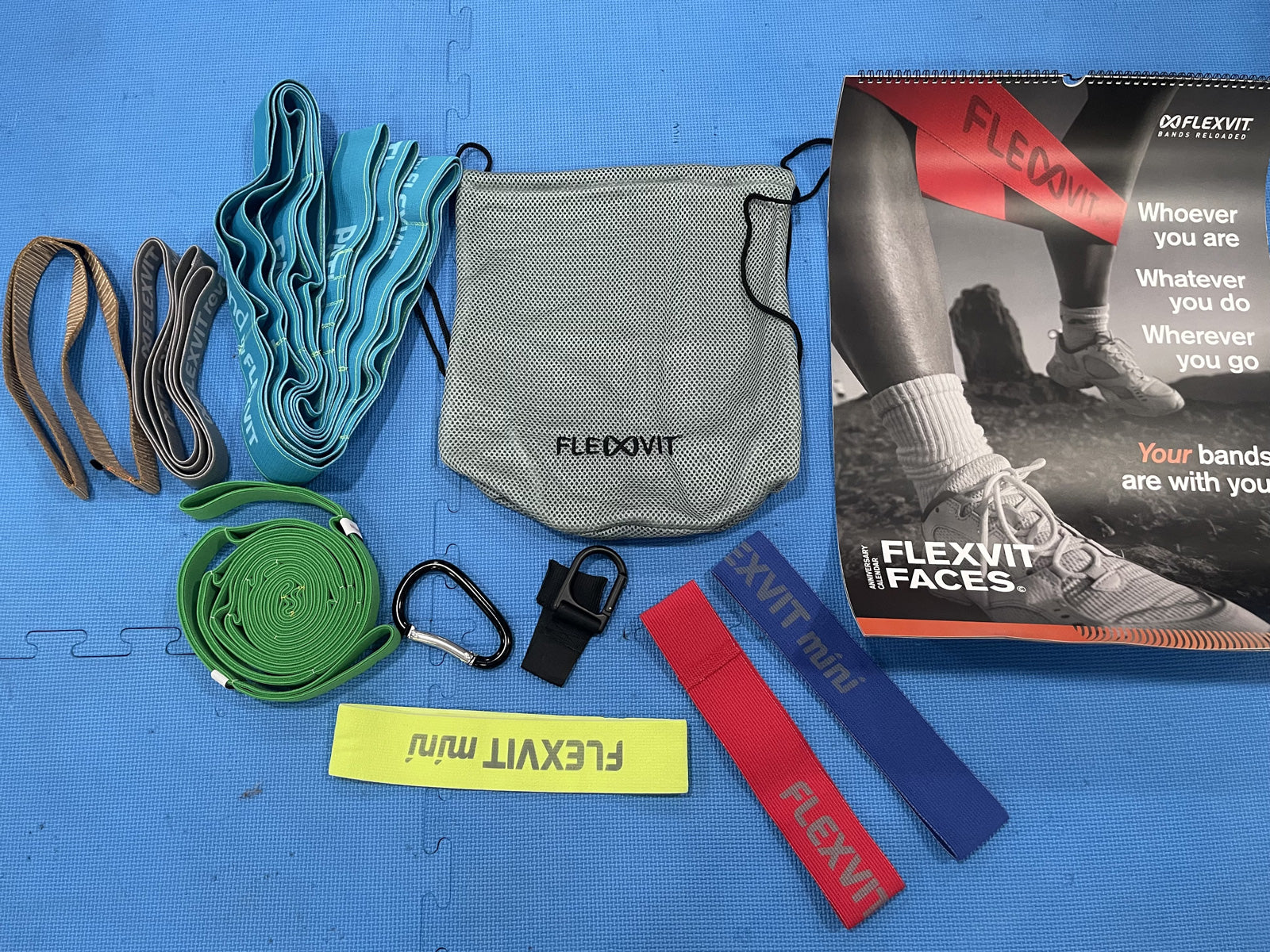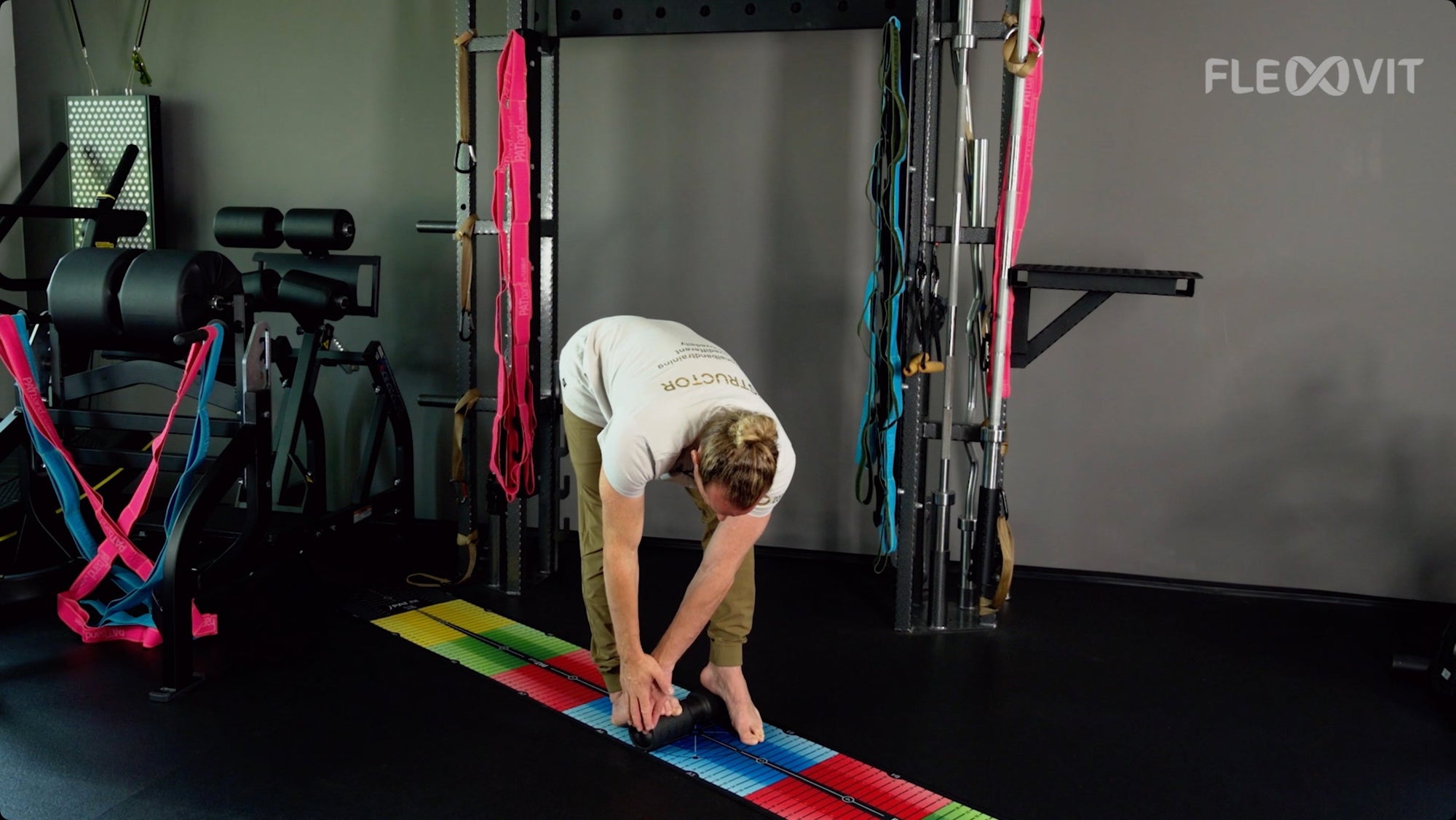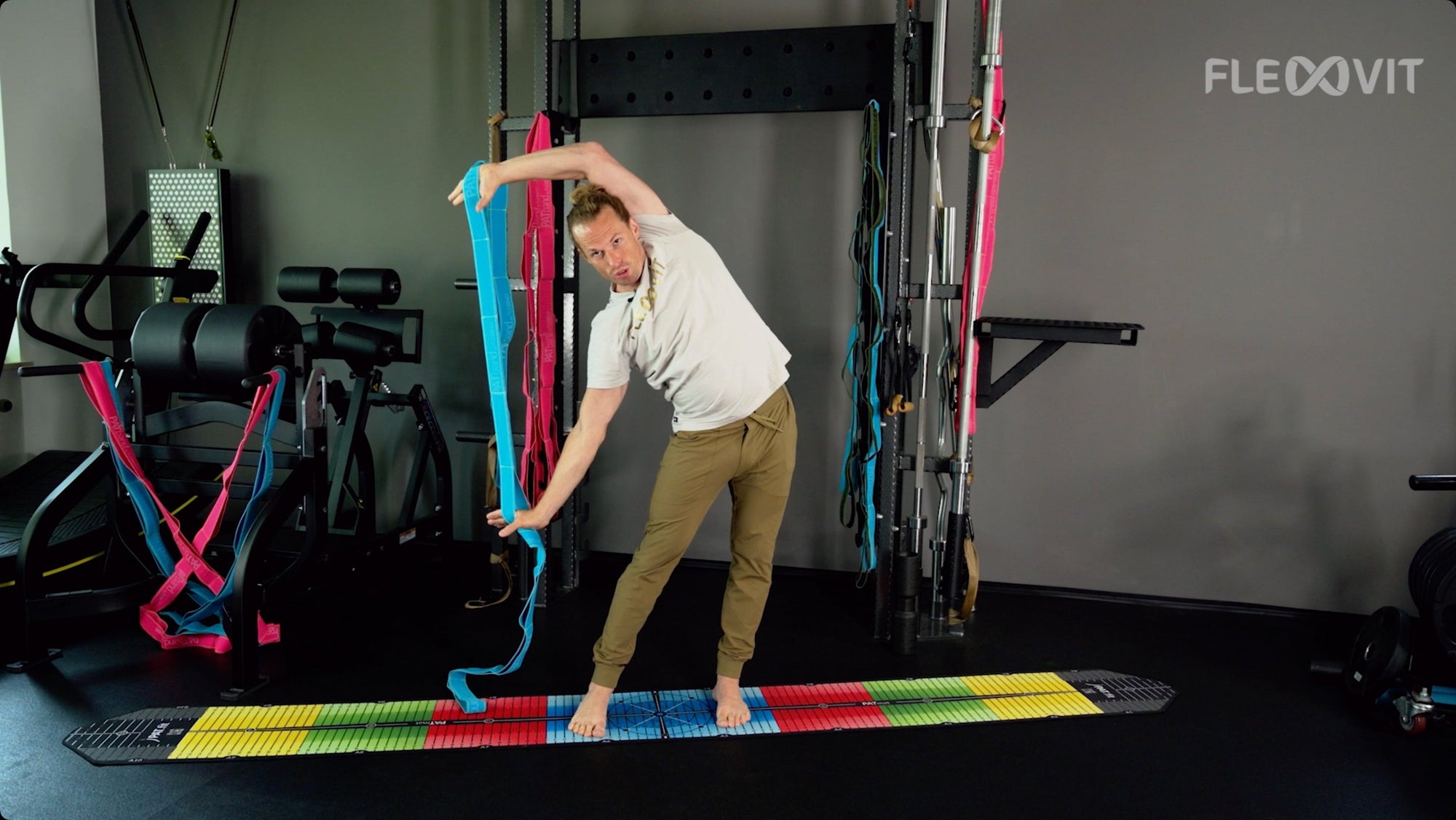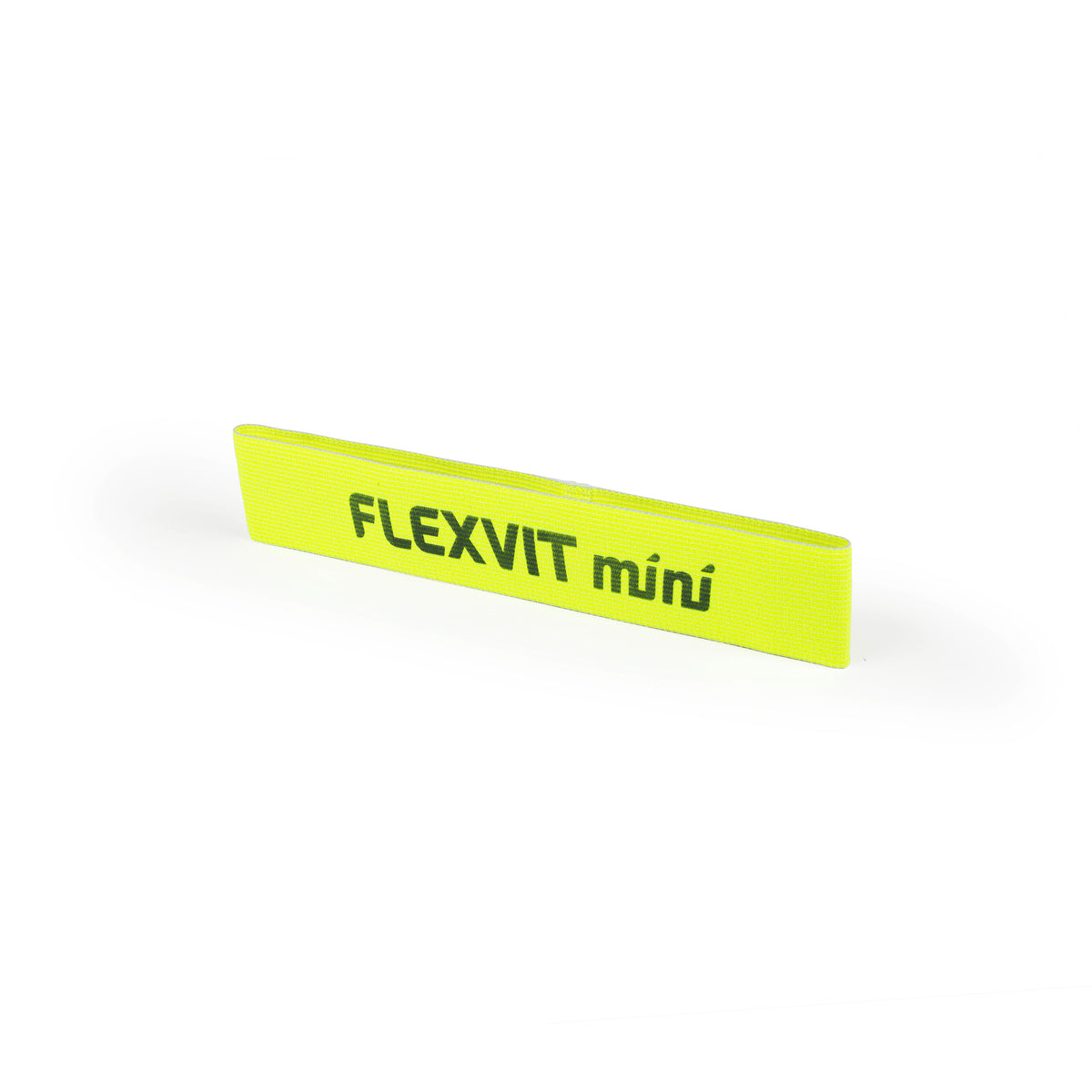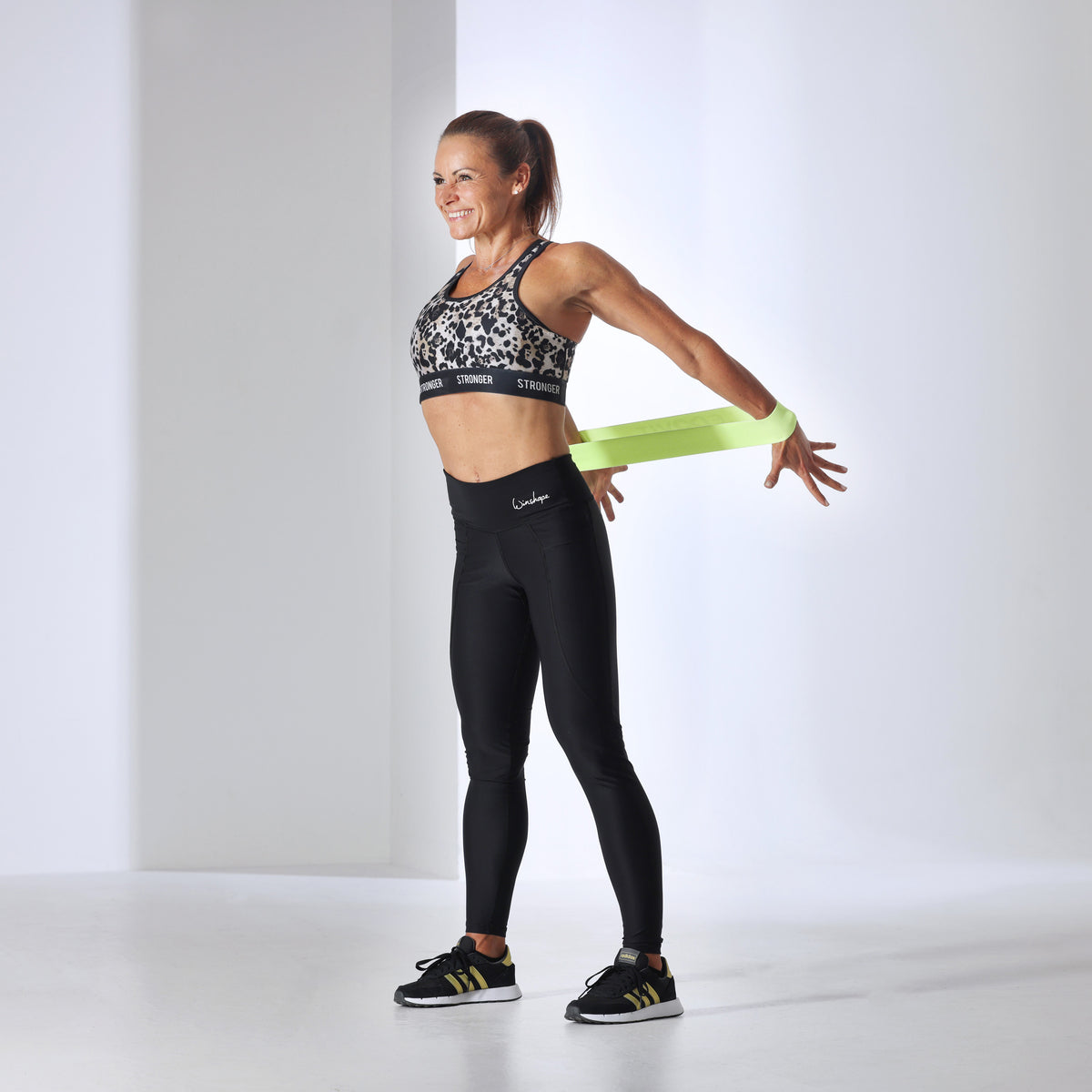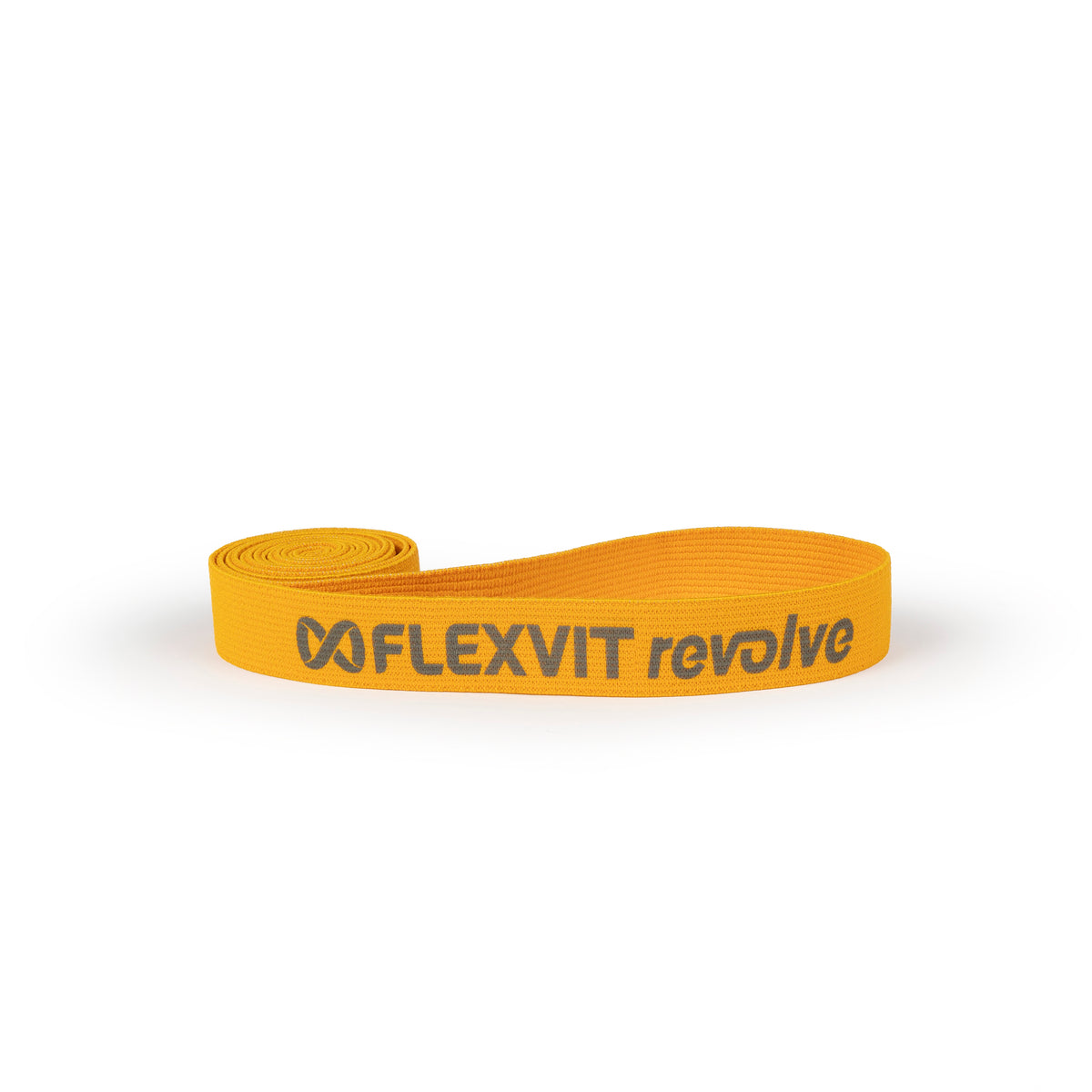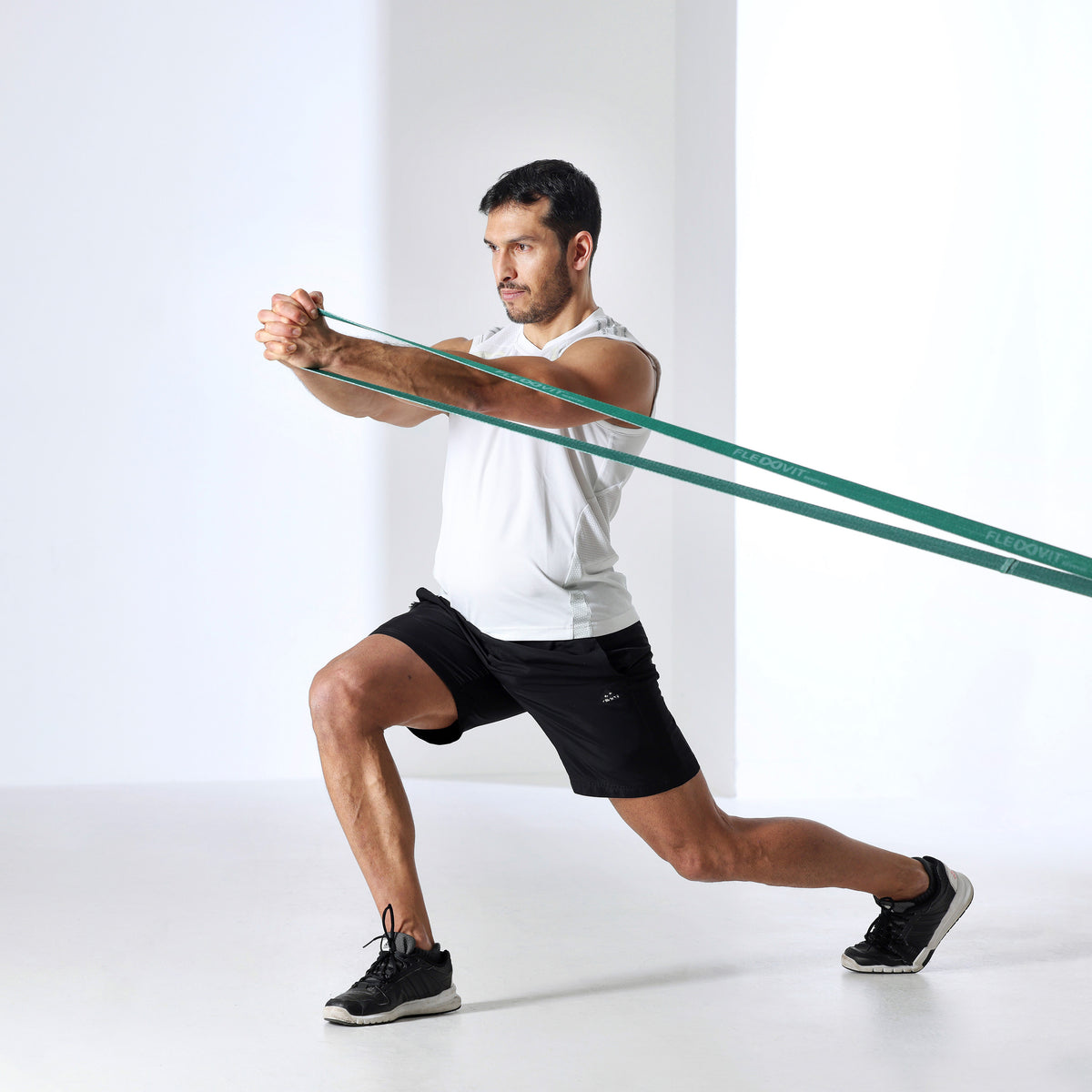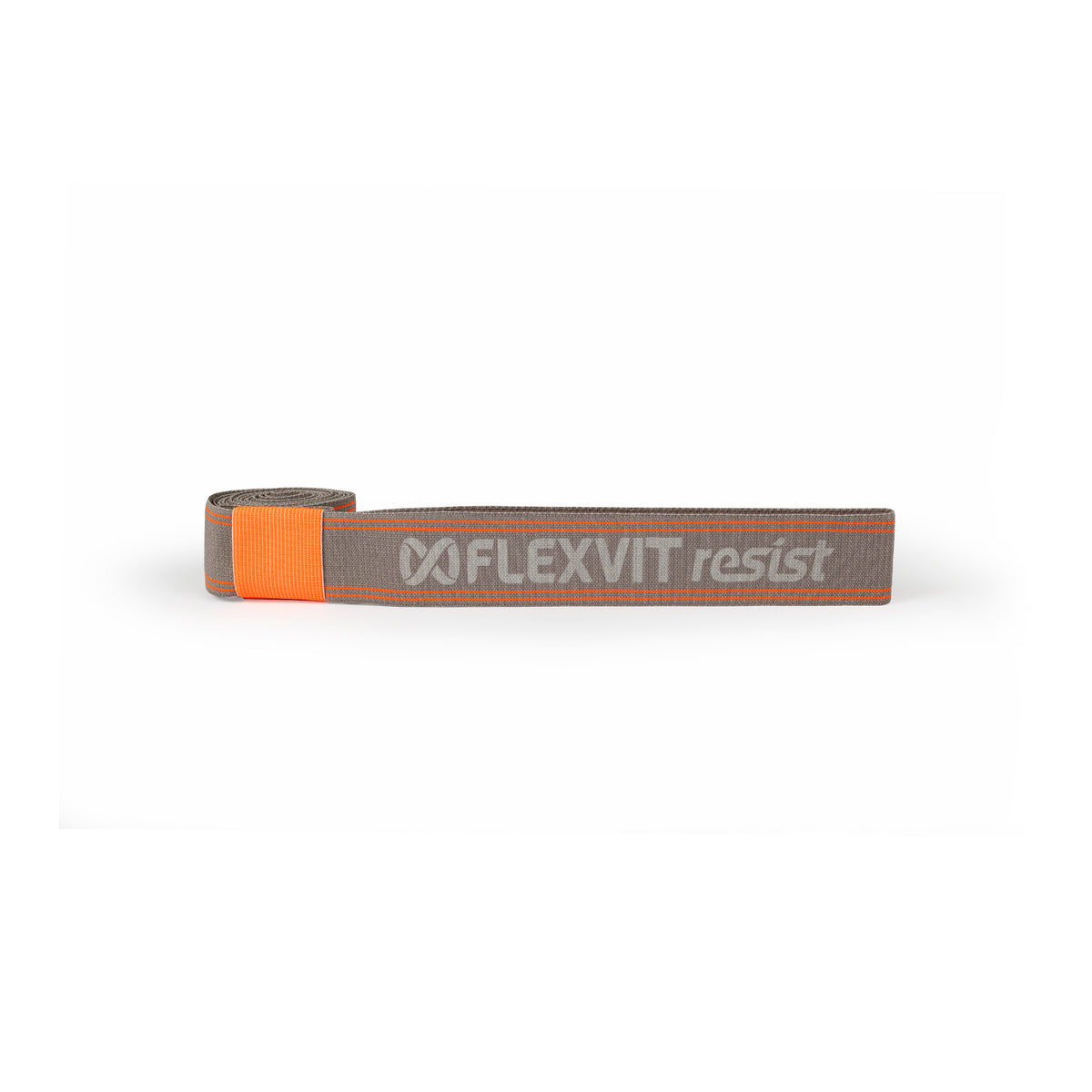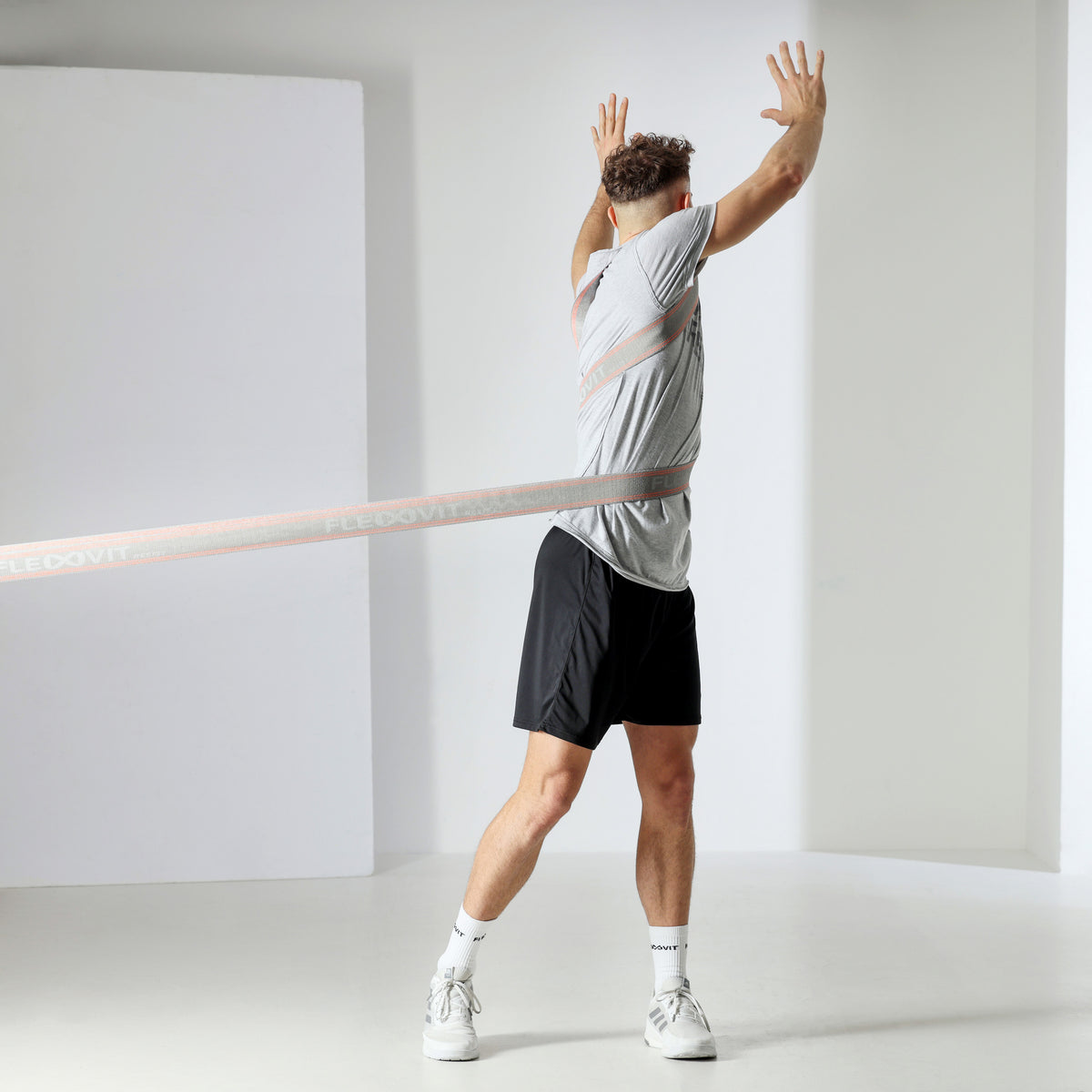How good and useful is fitness training for children? It's no secret that exercise is good for you. And even for the youngest among us, it is of great health and psychological benefit if sport and an active and conscious lifestyle are an integral part of their everyday life.
Content overview:
- Why is fitness training important for children?
- Fitness training for children – how do you train?
- Functional Training for Children – Why resistance bands?
- Exercises for children – FLEXVIT MultY
- Exercises for children – FLEXVIT MinY
 The right fitness training for children and young people can be very important for their sporting development.
The right fitness training for children and young people can be very important for their sporting development.
Why is fitness training important for children?
Whether you're an adult or a child, exercise is good. Sport and activity strengthen the muscles and bone structure, prevent obesity and also reduce the risk of cardiovascular diseases, diabetes and cancer (1).
And the head is also trained during sport. Physical activity can give children a better perspective in life by building self-confidence, managing anxiety and depression, and increasing self-esteem and cognitive abilities through exercise (2).
Playing sports can also represent a strong social component in children's development. When playing sports, especially in a club context, children interact with other children. As a result, social norms and values are internalized naturally and subconsciously. Through play, children learn to deal with other people, resolve conflicts and develop coping strategies that they can also apply to all other areas of life (3).
Fitness training for children – how do you train?
When training adults and children, the extent to which they are overwhelmed is crucial. If children are not challenged, they become bored and lose interest in the activity. If they are overwhelmed, frustration and anger can also be a hindrance. It is important that children enjoy exercise - so it is essential to adapt the training to the children's age and level of development.
Here is a small overview of the development stages and their specific characteristics, and what consequences this has for training with children (4):  Training adapted to the development of children and young people - an overview
Training adapted to the development of children and young people - an overview
Functional Training for Children – Why resistance bands?
Resistance bands are the perfect tool for easily adapting training to different age groups, because especially when training for young people, it is important that exercises challenge each individual and do not overwhelm them. Particularly in children, there can be major developmental differences within the same age group, especially during puberty. With the bands, every child can easily and with minimal effort select the right resistance and thus improve their individual performance level. This means that every exercise is suitable for every child and personal requirements are taken into account, which increases overall training success.
Compared to machine training, most band exercises are easier to perform. Therefore, the risk of injury or harmful training due to improper execution of equipment exercises is lower. In addition, children can try out the bands without hesitation and do not need a supervision person at all times, as is often the case with equipment training. This relieves the pressure on the trainers and at the same time strengthens the kids' self-confidence and independence.  The FLEXVIT Youth collection is adapted to fitness training for children and young people - here: the Hip Bridge
The FLEXVIT Youth collection is adapted to fitness training for children and young people - here: the Hip Bridge
Advantages: Fitness training for children & young people:
- Resistance adapted to the athlete's physical development
- Functional training of movement sequences with simultaneous strength and flexibility training
- Improvement of motor skills and coordination skills in childhood
- The risk of injury is significantly minimized
- 5)The resistance bands serve as a multi-tool for all ages
Fitness training for children – FLEXVIT MultY
The FLEXVIT Multi is the larger and, above all, longer brother of the FLEXVIT MultY for children and young people. It is ideal for partner exercises that promote the children's sense of teamwork and togetherness.
Tip: Giving the exercises figurative names, such as “the butterfly”, is a simple way to make the training more colorful and tangible, especially for smaller children.
The Imaginary Butterfly (Butterfly)
One of you stands shoulder-width apart and holds the middle of the FLEXVIT MultY with your arms outstretched or slightly bent. The following applies to the other: You also stand with your feet shoulder-width apart. Stand upright and straight, with your knees slightly bent. Your arms are slightly bent and are at the sides of your body for the starting position. You grip the FLEXVIT MultY with your hands. These are your wings. As the conceited butterfly, you want to show your partner how beautiful your wings look. So that he can get a good look at it, you lift it up slowly and in a controlled manner at the same time. When your arms are about shoulder height, proudly present your wings here for a second, and then fold them together just as consciously and slowly as you spread them out. 
The “I-Don’t Know” (Shrugs)
As a trainer, you can also incorporate a bit of humor and fun here. For example, all children can always do a shrug together and at the same time after being asked a funny question that may not make any sense. However, you have to be careful not to laugh too much and not train properly enough. Each child gets their own FLEXVIT MultY and can perform the shrugs as follows:
Stand on your FLEXVIT MultY in a shoulder-width position - you can also put your feet in the loops provided to get more stability in your exercise. You then grab one loop of the band with your hands. Straighten up. Your arms should be at your sides and stretched straight along your body. You can squat slightly to engage your back and lower body. Your upper body and shoulders point forward. This is your starting position.
Now, while inhaling, slowly and controlledly pull your shoulders up as far as you can, up to your ears. Do not perform this movement jerkily, but concentrate entirely on drawing the strength from your neck and shoulder muscles without momentum. Make sure your upper body stays upright and active. Also keep your arms as relaxed as possible, do not use them to exert any strength. Hold your shoulders up briefly, then gently lower them again while breathing out calmly.
Example questions:
Who ate the last cookie?
Who secretly watched TV?
Who knows what day it is today?
Wild horse and tired carriage
One child places the middle part of the FLEXVIT MultY around the front of the hip, while another child holds the two ends in his hand. One of the children is the “wild horse” who really wants to run away. The “tired carriage” resists and doesn’t actually want to move. In this way, one child's sprint strength is particularly trained when he or she wants to run away from the other child and with external resistance. The other child resists with both his arms and his leg strength.
As a further variation for the entire training group, the “carriages” can compete against the “horses”. The trainer times out how long it takes a group of “horses” to pull the carriage over a predetermined distance. The roles are then swapped and time is stopped again.  Fitness training for children and young people should be one thing above all else - fun!
Fitness training for children and young people should be one thing above all else - fun!
Fitness training for children – FLEXVIT MinY
The FLEXVIT MinY is the handy little brother of the FLEXVIT Mini. Animals or other visual comparisons can also loosen up the training atmosphere for these exercises.
The robot (shoulder external rotation)
Hold the FLEXVIT MinY between both hands. Thanks to the pleasant textile feel, you don't have to worry about unpleasant tugging. Keep your upper arms close to your body and try to keep them in this position as much as possible during rotation. Your elbows are bent at a 90° angle and are also kept close to your chest throughout the entire exercise.
Now turn your forearms outwards or pull the FLEXVIT MinY apart. You will notice your shoulder blades contracting. Hold this contraction for one to two seconds and then bring your forearms back in front of your body in a controlled manner.
Squats
Squats are one of the most effective exercises that activate many muscle groups at the same time. Position the FLEXVIT MinY on your thighs just above your knees. Stand with your feet shoulder-width apart, your feet and upper body pointing forward. Now slowly lower your hips. At best, you can lower your hips to at least the height of your knee joints so that your legs form a 90° angle. Pay particular attention to keeping your back straight and active - neither hunching nor arching your back. If you can't get that deep without losing your posture, only go as deep as you can: With time and training in this exercise, you will gain the mobility you need to squat to a 90° angle. Make sure that your knees are always stable and pointing straight forward and do not fall inwards. When you have reached your deepest bend, slowly and controlledly go back up until you are fully upright with your legs straight. Don't take a break when you get to the bottom. Hold for a maximum of a second and then begin to straighten in a controlled manner.
Game variant with music:
The children should go up and down to certain songs or to certain rhythms and to the beat.
Game variant – Crab (Lateral Squat Walk):
As crabs, the children are only allowed to walk sideways and are slightly crouched. As with a normal squat, the FLEXVIT MinY is positioned just above the knees. Here too, it is important that the stomach is actively tensed and the back is straight. The hips should also be kept as straight as possible. For example, “the crabs” can then overcome a route or a parkour. The parkour can, for example, contain a slalom course or elements where the children have to squat deeper. 
With the Youth collection from FLEXVIT you get resistance bands tailored for children and teenagers!
Sources:
- Kriemler S., Hebestreit H., Radtke T. (2021) Influence of exercise and sport on health and development. In: Menrath I., Graf C., Granacher U., Kriemler S. (eds) Pediatric sports medicine. Springer, Berlin, Heidelberg. https://doi.org/10.1007/978-3-662-61588-1_4
- Exercise may prevent depression in middle childhood (healio.com)
- Diehl K., De Bock F., Schneider S. (2014) Importance of sporting activity for children and young people from a sociological and educational perspective. In: Becker S. (eds) Active and healthy?. Springer VS, Wiesbaden.
- https://doi.org/10.1007/978-3-531-19063-1_13
- M Fröhlich, A Pieter, J Gießing, M Klein (2009) Strength and strength training in children and young people - current status. In: Competitive sports 02/2009. Philippka sports publisher, Münster. Available (as of August 5, 2021)

